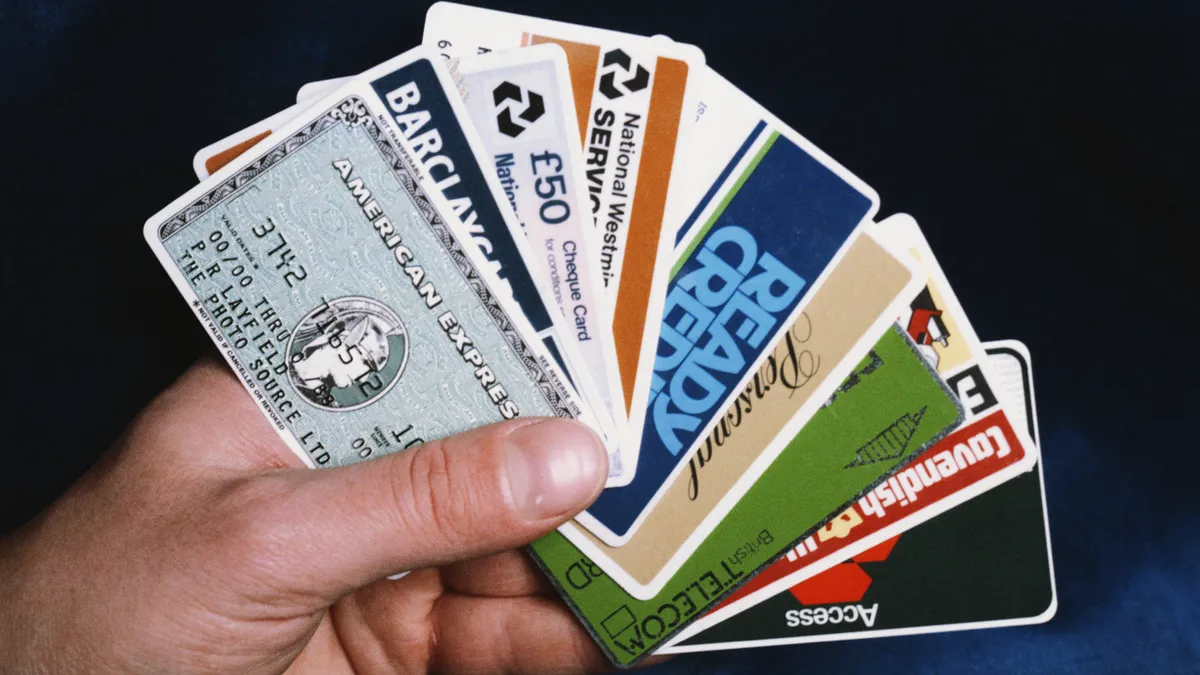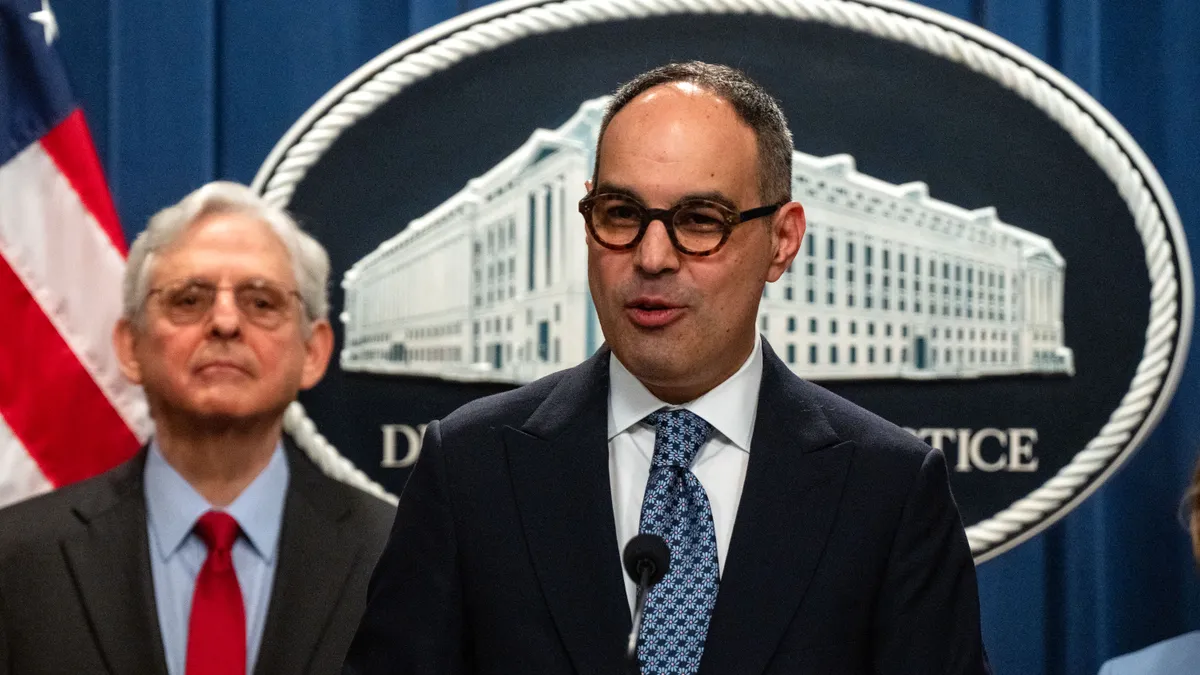Dive Brief:
- The average charge-off rates for six of the biggest U.S. bank credit card issuers fell 5 basis points to 1.95% in March compared to February, according to a report from S&P Global Market Intelligence. While the average rate zig-zagged during the COVID-19 pandemic, there has generally been a downward trend over the past year, and this year's March number was 59 basis points lower than a year ago in March.
- Of the six issuers, Bank of America had the highest charge-off rate at 3.09% in March and was the only issuer to experience an increase in its rate that month relative to February. American Express had the lowest rate at 0.87%.
- The average credit card delinquency rate for the companies also declined, to 1.08% in March, from 1.18% in February, the April 27 report said. It was 42 basis points lower than in March 2020. All six companies saw delinquency rates decline in March, as consumers paid off their bills with help from government pandemic aid. Bank issuers believe the trends are likely to persist until next year.
Dive Insight:
The improved credit picture comes as consumers have increasingly opted to use debit as opposed to credit cards during the COVID-19 pandemic. That's presumably because the uncertain economic outlook led them to prefer taking on less debt. Increased payments on the debt they were carrying also resulted from less spending, more saving, and receipt of monetary aid from federal and state relief packages.
For most of the six banks surveyed by S&P, it was the third consecutive month of credit card delinquency rate declines. As the pandemic begins to subside and spending is ramping back up, it appears consumers are turning to credit again so the recent charge-off and delinquency dynamics could change. When a bank logs a 'charge-off,' it means the institution is writing off a loan, or receivable, as unlikely to be repaid, and therefore a loss.

The charge-off and delinquency rate declines, along with improving economic conditions, have "buoyed the expectations of banking executives," the S&P report said, detailing statements from the executives during earnings conference calls with analysts this month.
In explaining the credit card delinquency decline, the issuers pointed to the reopening of the economy, the federal government's stimulus programs and consumers' improved financial condition, the report said. An improved employment picture, increased household savings, and industry forbearance programs also led to consumers paying down debt, the report added.
"So the good news is the consumers are healthy," Bank of America CEO Brian Moynihan said during that company's first-quarter earnings call last month. "We have no deferrals left, except in the mortgage business."
Even on mortgages, consumers were paying off debt, putting a priority on those home loans over credit card debt and auto loans during the pandemic, according to a recent study from credit ratings agency TransUnion.
"While the impact from stimulus payments should abate over the next few months, we expect payment rates will remain elevated for the rest of the year as household use savings to meet debt obligations and continue to benefit from payment relief programs, such as federal student loan and mortgage payment forbearance," Discover Financial Services CEO Roger Hochschild said during an earnings conference call last month.
Generally, the executives don't expect credit conditions to deteriorate until late this year, or more likely, next year, the report said.
"We're now seeing in this quarter credit come back a bit and start to drift into positive territory," Visa CEO Alfred Kelly said during that company's recent earnings call last week. "But I think that at least for the foreseeable future and maybe for longer, that I think you're going to see debit continue to grow above credit."











